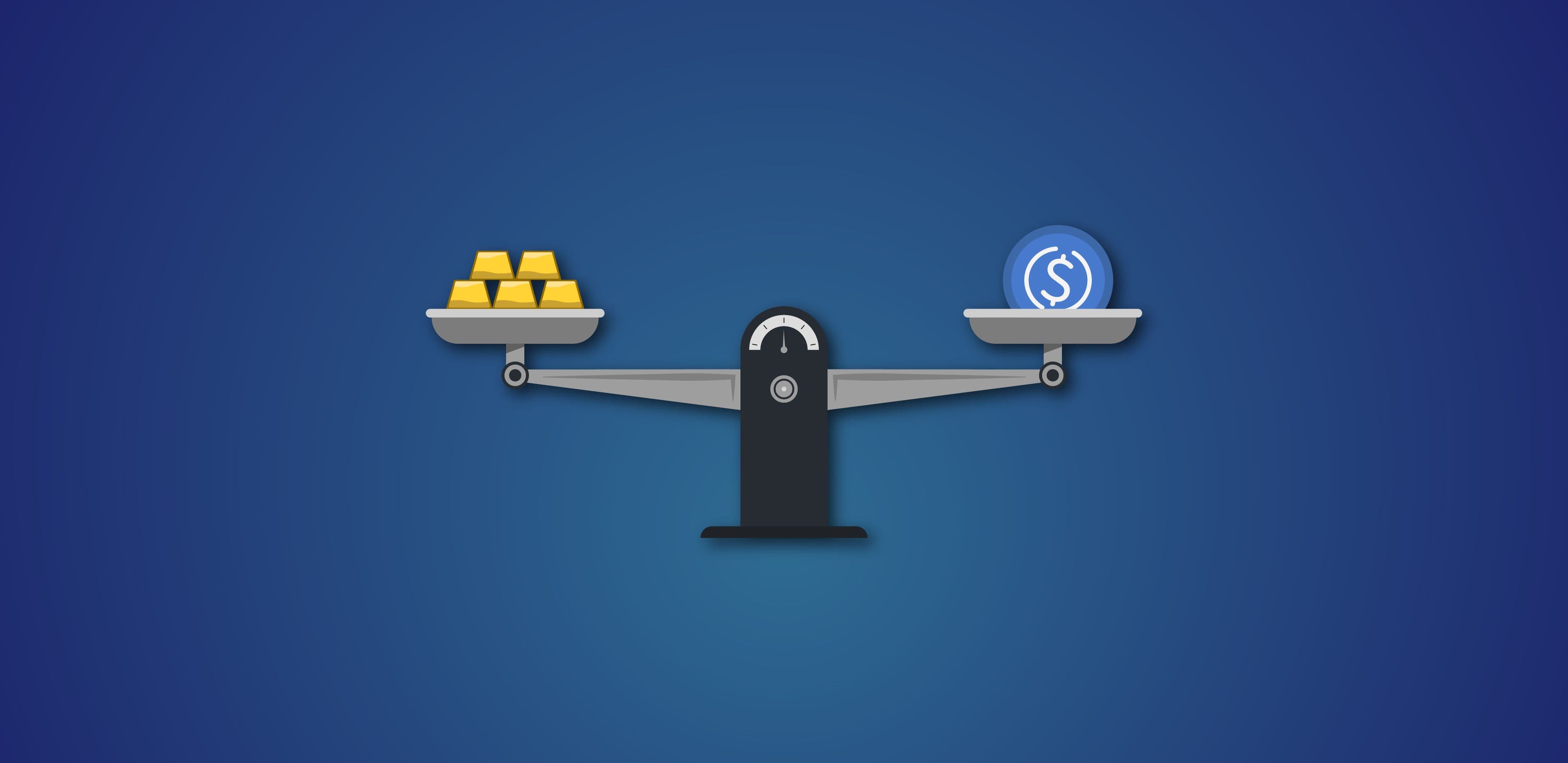
What is a stablecoin and how does it work?
You have probably heard of the term "stablecoin" in various cryptocurrency contexts? But what exactly is a stablecoin, or stable cryptocurrency? And what does it mean that it is stable?
It is no secret that investing and trading in cryptocurrency involves high risk. For example, if you want to invest in cryptocurrency, but do not want to expose yourself to the degree of risk that traditional cryptocurrencies bring, stablecoins can be a good alternative.
What is a stablecoin?
Definition:
Stablecoins are a type of cryptocurrency where the price remains stable. With stablecoins, the price is usually linked 1:1 to a traditional currency (often called "FIAT currency") such as EUR, USD or Norwegian kroner. The most common form of stablecoin is "crypto versions" of US dollars (USD), such as the stablecoin USDC that we offer at Firi. Stablecoins are less exposed to the large fluctuations in price that can be obtained in the rest of the crypto market, such as Bitcoin and Ethereum.
In other words, "stable cryptocurrencies" want to offer the best of both worlds; the fast transaction times, the security and privacy you get when using cryptocurrency, and the stability you get from traditional currencies. The risk of stablecoins is then tied up in the reserve and its value, rather than the crypto market in general.
A brief summary:
- The traditional currencies, such as NOK, DKK, EUR, USD are known as “FIAT currency”
- Stablecoins are made to be stable and often hold a 1: 1 value with an underlying FIAT currency
Stablecoins can also be linked to a commodity (e.g. gold) or another cryptocurrency. A stable coin is always directly linked to another stable asset, such as the US dollar or gold, which is why they can stay so stable. One of the most popular stablecoins is the USD Coin (USDC), which is pegged to the US dollar, but you can find stablecoins linked to other currencies as well.
Three different categories for stablecoins
In order to support the value of stablecoins, the creator of these should have stored a corresponding value in other assets or created a mechanism that ensures that the value maintains a 1:1 ratio with the underlying currency. For example, you can be sure that the value of a "crypto-dollar" is actually worth 1 USD. Three different methods are used to keep the value of a stablecoin stable, and we can therefore divide the currencies into three main categories:
- Stablecoins with collateral in fiat (traditional money) such as US dollars or in a commodity, such as gold.
- Stablecoins with collateral in another cryptocurrency or other types of securities.
- Stablecoins without collateral, but supported by an algorithm.
We will look more closely at the three categories here:
Stablecoins with collateral in fiat or commodities:
Usually the issuers of a stablecoin will set up a reserve that is worth as much as the total value of the stable cryptocurrency. This could be, for example, US dollars in a traditional bank or precious metals such as gold and silver. The values in this reserve serve as a security for the stable cryptocurrency. In theory, every "crypto-dollar" should be able to be exchanged for a real dollar. An example of a stable cryptocurrency that has security in fiat is USD Coin.
Stablecoins with collateral in cryptocurrency:
Other stable cryptocurrencies have collateral in either one other digital currency or a group of digital currencies. Because cryptocurrency fluctuates in price, the security of the relevant stablecoin must be exaggerated to guarantee a stable price despite exchange rate changes. This means that there must be a much larger value in reserve than the current number of stablecoins in circulation. For example, if one wants to issue 100 stablecoins worth $ 1, there must be a reserve of cryptocurrencies worth $ 150. This way you are assured that the value of the reserves ever falls below the value of the circulating stablecoins. Smart contracts are used to control such stable cryptocurrencies. An example of a stablecoin that uses cryptocurrency as collateral is MakerDAOs stablecoin DAI.
Stablecoins without collateral - Algorithmic stablecoins:
Stablecoins without collateral are also called "algorithmic stablecoins". These do not use any reserve, but rather use a mechanism to increase or decrease the offer to maintain a stable price. This is similar to the way the central bank maintains the value of fiat currencies; e.g. by balancing interest rates and producing new money. An example of an algorithmic cryptocurrency without security is Ampleforth (AMPL).
Which stablecoins (stable cryptocurrencies) exist?
There are many stable cryptocurrencies and you can see the list here. As of today, the most used stablecoins are Tether (USDT) and USD Coin (USDC).
How to invest in stablecoins?
You can trade and invest in stablecoins on various cryptocurrency exchanges. Firi currently has Dai, and you can trade safely and easily by reading more here.
Sources:
